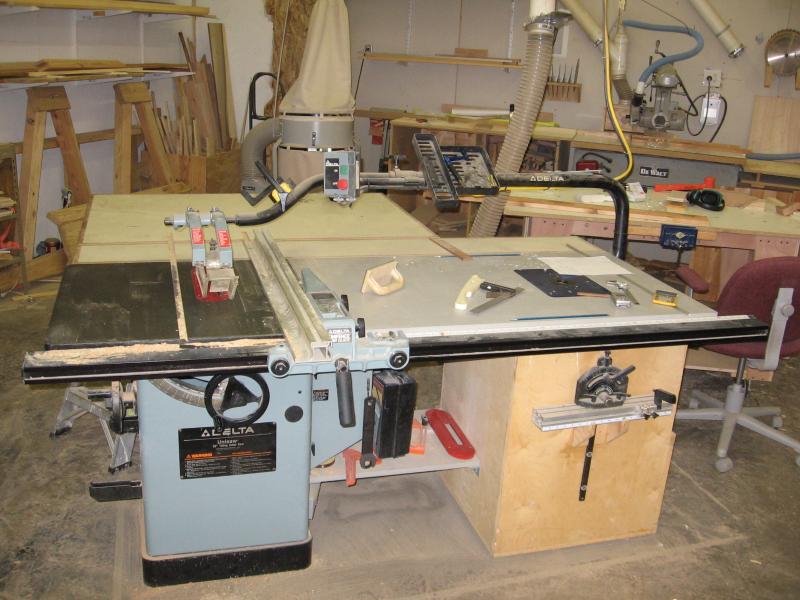Question
A couple times per year, I apply raw veneers to MDF panels. I use a mechanical press, Titebond veneer glue, and a variety of figured and straight grained veneers. The problem comes when cutting these panels into smaller pieces on the table saw.
Lately, I've used an 80 tooth blade (Avenger Brand) which does a good job crosscutting or ripping these panels. But when I tilt the blade to 45 degrees for bevel cutting, I'm getting a fair amount of chip out, and quite a bit of drag, which pulls the work piece away from the fence. Applying blue painter's tape on the cut line eliminates the chip out, but the tape's adhesive accumulates on the carbide teeth, making drag even worse.
After looking at Freud's and Dewalt's selections of blades, I'm getting confused, as they make blades recommended for veneered plywood, some for melamine and laminate, with similar but also differing characteristics. MDF + veneer seems to be a cross between laminate and wood. At this point, I'd just like to know whether I should be using TCG or ATB, low angle hook or high. Would thin kerf be better, or will it flex too much? Maybe there's a problem with the blade height? Or some technique to improve results? Of course, any specific blade recommendations are appreciated, but I would prefer to stay in the $50 range if possible.
Forum Responses
(Veneer Forum)
From contributor D:
Whenever I have questions like this, I call the people who deal with it everyday. Bull Sharpening in Oak Park, Illinois always has the blades I'm looking for. My favorite blades are Stehle and Ghudo, but they cost more than $50. I would much rather pay an extra $30 or $50 for a good blade than have extra time in labor and headaches.
The method I now subscribe to is cutting all my soon to be beveled parts to "net" size with 90 degree edges. Then I crank the saw to the required bevel angle and using an auxiliary fence with a rabbit at the bottom and the blade elevated to where it cuts into the auxiliary fence. I adjust the fence and the blade height to a setting that bevels the entire thickness without removing any of the width or length of the panel on the upper face or long point of the bevel face.
With this method, you can bevel the edges of parts that have differing widths and heights with a single fence setting as long as the parts are the same thickness and, of course, need the same bevel angle.
The rabbet at the bottom of the auxiliary fence is there to prevent the triangular scrap from binding between the fence and blade and shooting out of the front of the saw. This method also works great with a power feed.
